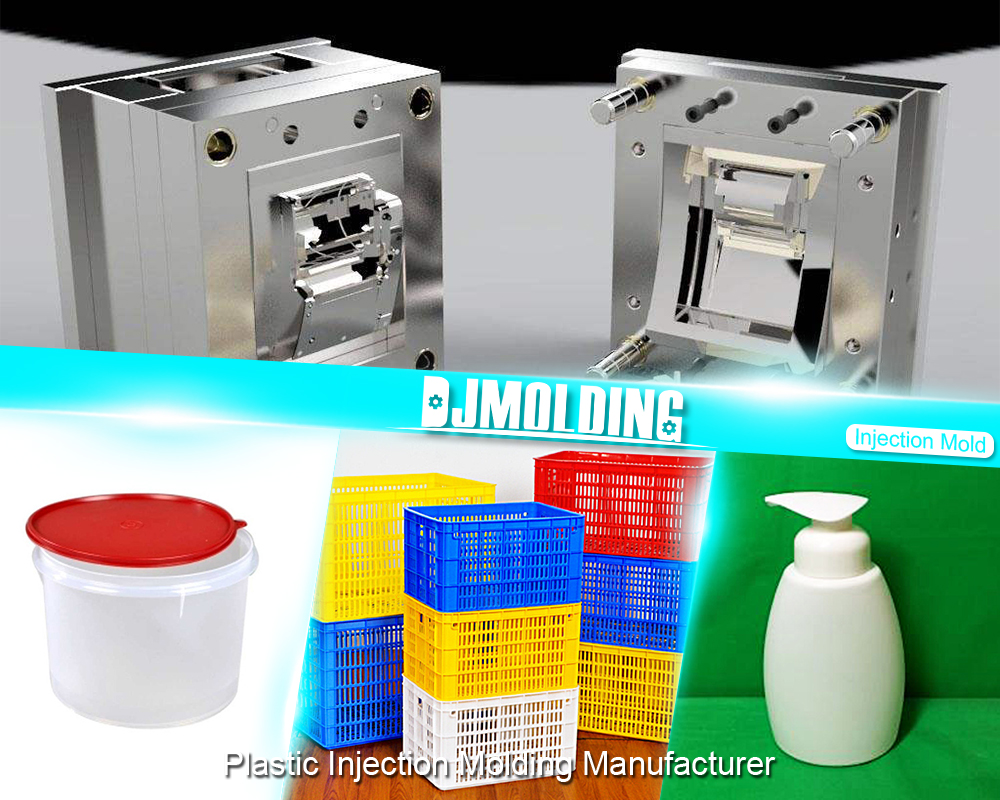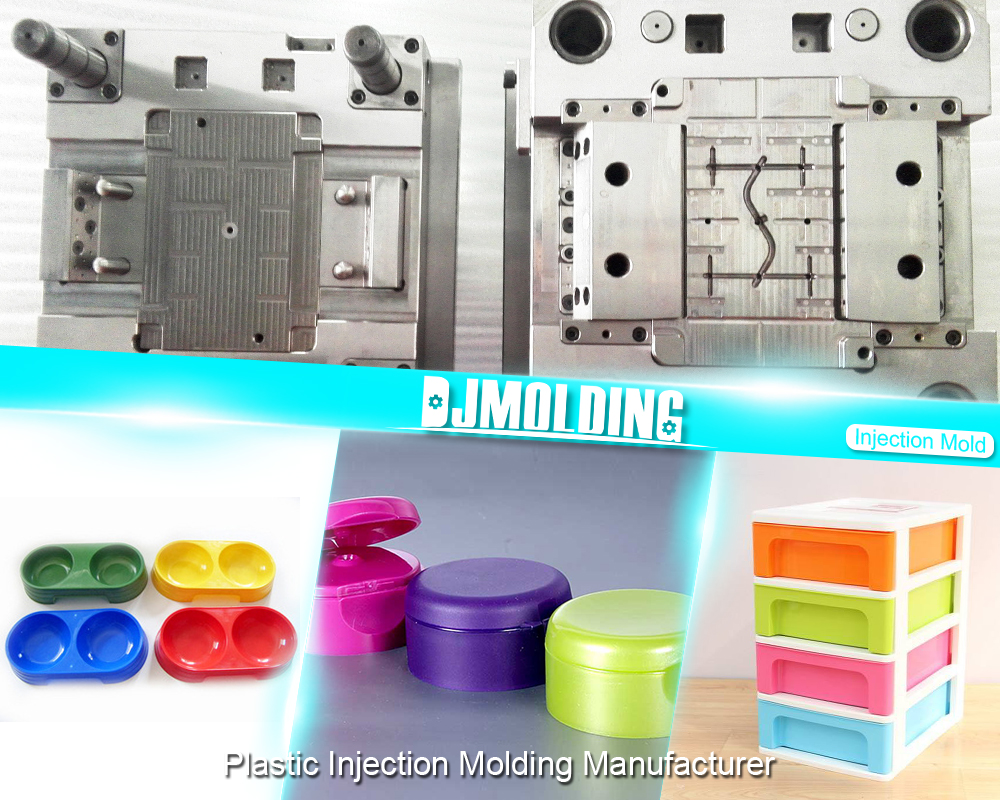Custom Plastic Injection Molding Services: The Ultimate Guide to High-Quality Manufacturing
This blog post provides a comprehensive guide to custom plastic injection molding, covering its benefits, process, applications, and critical considerations for achieving high-quality manufacturing results.
Custom plastic injection molding is a highly versatile and widely used manufacturing process that offers numerous advantages to various industries. This ultimate guide will explore the intricacies of custom plastic injection molding, its significance, and the key elements contributing to high-quality manufacturing. Whether you are an industry professional or interested in understanding this innovative process, this guide will provide valuable insights.

Understanding Custom Plastic Injection Molding
Definition and Overview
Custom plastic injection molding is a manufacturing technique that involves injecting molten plastic into a mold cavity to create complex and precise plastic components. This section will delve into the fundamental concepts and processes of custom plastic injection molding.
Cost-effectiveness and Efficiency
- Discuss how custom plastic injection molding offers cost-effective production, reduced material wastage, and faster cycle times.
- Highlight the benefits of high production volumes and economies of scale.
Design Flexibility and Complex Geometry
- Explain how custom plastic injection molding enables the production of intricate designs and complex geometries.
- Discuss the freedom to incorporate features such as undercuts, thin walls, and intricate details.
Material Selection and Versatility
- Explore the wide range of thermoplastic materials available for custom plastic injection molding.
- Discuss the versatility of material properties, including strength, durability, transparency, and chemical resistance.
The Plastic Injection Molding Process
Step 1: Design and Prototyping
- Explain the importance of designing for manufacturability and prototyping before production.
- Discuss the role of CAD software, 3D printing, and prototype testing in optimizing the design.
Step 2: Mold Creation
Mold Materials and Considerations
- Explore different mold materials, such as steel and aluminum, and their suitability for specific applications.
- Discuss factors to consider when selecting a mold material, such as cost, durability, and production volume.
Mold Design and Engineering
- Explain the key elements of mold design, including parting lines, gates, runners, and ejection systems.
- Discuss the importance of mold flow analysis and simulations in optimizing mold design.
Step 3: Injection Molding Production
Machine Selection and Setup
- Discuss the different types of injection molding machines and their suitability for various production requirements.
- Explain the setup process, including barrel heating, mold clamping, and injection unit calibration.
Material Melting and Injection
- Detail the stages of material melting and plasticization within the injection molding machine.
- Discuss the injection process, including the role of screw speed, injection pressure, and injection time.
Cooling and Ejection
- Explain the significance of proper cooling in achieving dimensional stability and minimizing defects.
- Discuss the ejection process, including mold opening, part removal, and ejection mechanisms.
Step 4: Post-Processing and Finishing
Trimming and Deflashing
- Explore the methods used to remove excess material and flash from molded parts.
- Discuss the importance of trimming and deflashing in achieving the desired aesthetics and functionality.
Surface Finishing Techniques
- Highlight various surface finishing techniques, such as polishing, texturing, and painting.
- Discuss the impact of surface finish on part appearance, performance, and functionality.
Quality Control and Inspection
- Explain the significance of quality control measures in ensuring high-quality manufacturing results in custom plastic injection molding.
- Discuss the various inspection methods, such as dimensional measurement, visual inspection, and material testing.
- Highlight the importance of quality control in identifying defects, ensuring part conformity, and maintaining consistency.
Applications of Custom Plastic Injection Molding
Automotive Industry
- Explore the role of custom plastic injection molding in automotive applications, such as interior components, exterior body parts, and engine components.
- Discuss the advantages of using plastic over traditional materials regarding weight reduction, cost-effectiveness, and design flexibility.
Medical and Healthcare Sector
- Highlight the critical applications of custom plastic injection molding in the medical field, including medical device components, surgical instruments, and disposable medical products.
- Discuss the stringent regulatory requirements and quality standards associated with medical-grade plastics.
Consumer Electronics
- Discuss how custom plastic injection molding contributes to producing electronic device enclosures, connectors, buttons, and other components.
- Highlight the importance of precision, durability, and aesthetic appeal in consumer electronics manufacturing.
Packaging and Containers
- Explore using custom plastic injection molding in packaging solutions, such as bottles, caps, closures, and containers.
- Discuss the benefits of plastic packaging, including lightweight design, product protection, and branding opportunities.
Aerospace and Defense
- Explain the applications of custom plastic injection molding in the aerospace and defense sectors, such as aircraft interiors, cockpit components, and defense equipment.
- Discuss the materials, performance, and regulatory compliance requirements in these industries.
Critical Considerations for High-Quality Manufacturing
Material Selection
Thermoplastics vs. Thermosetting Plastics
- Discuss the differences between thermoplastics and thermosetting plastics, including their properties, processing considerations, and applications.
- Highlight the importance of selecting the appropriate material based on temperature resistance, strength, and chemical compatibility.
Additives and Reinforcements
- Explore additives and reinforcements in custom plastic injection moldings, such as fillers, colorants, flame retardants, and reinforcing fibers.
- Discuss the impact of these additives on material properties and processability.
Design for Manufacturability
Wall Thickness and Flowability
- Explain the significance of wall thickness in custom plastic injection molding and its impact on part strength, aesthetics, and moldability.
- Discuss the considerations for optimizing flowability to ensure consistent mold cavity filling.
Draft Angles and Undercuts
- Discuss the importance of draft angles in facilitating part ejection and reducing mold complexity.
- Explain the challenges and strategies for incorporating undercuts in injection-molded parts.
Gate and Vent Placement
- Highlight the role of gate design and placement in controlling material flow, reducing cosmetic defects, and optimizing part quality.
- Discuss the importance of venting to prevent trapped air and ensure complete mold cavity filling.
Quality Control and Testing
Inspection Methods
- Discuss various inspection methods used in custom plastic injection molding, including visual inspection, dimensional measurement, and non-destructive testing.
- Explain the importance of establishing quality control procedures and implementing statistical process control (SPC) techniques.
Dimensional Accuracy and Tolerance
- Discuss the challenges and strategies for achieving dimensional accuracy and tight tolerances in injection-molded parts.
- Highlight the importance of process monitoring, mold maintenance, and tooling precision in ensuring part conformity.
Material Testing and Analysis
- Explore the testing and analysis techniques for evaluating material properties, such as mechanical strength, thermal stability, and chemical resistance.
- Discuss the significance of material certification and traceability in ensuring the use of high-quality materials in custom plastic injection molding.

Conclusion
In conclusion, custom plastic injection molding is a highly versatile and efficient manufacturing process that offers numerous benefits across various industries. By understanding the critical aspects of this process, including its advantages, the injection molding steps, applications, and considerations for high-quality manufacturing, businesses can harness its potential to create complex and precise plastic components.
For more about custom plastic injection molding services,you can pay a visit to Djmolding at https://www.djmolding.com/custom-plastic-injection-molding/ for more info.
Original From: https://www.djmolding.com/custom-plastic-injection-molding-services-the-ultimate-guide-to-high-quality-manufacturing/